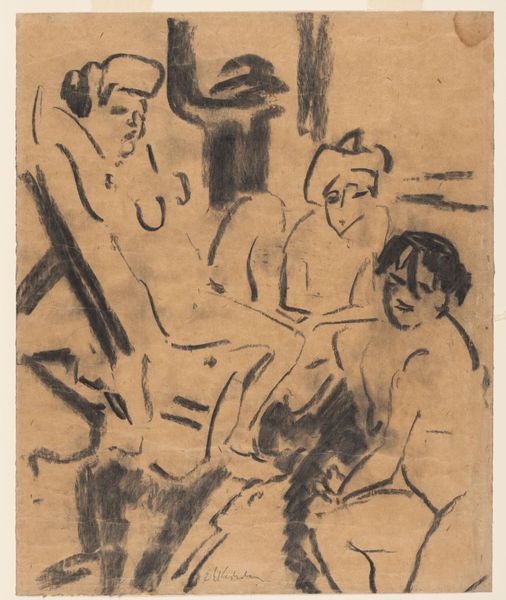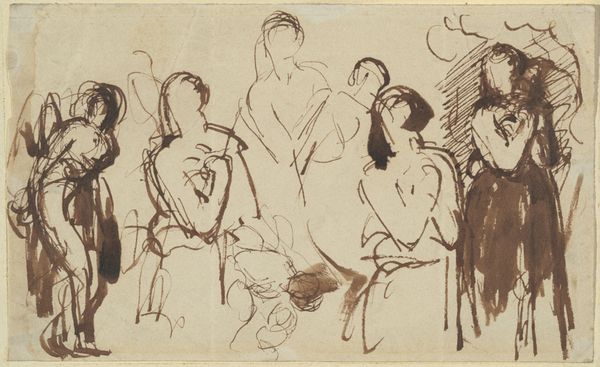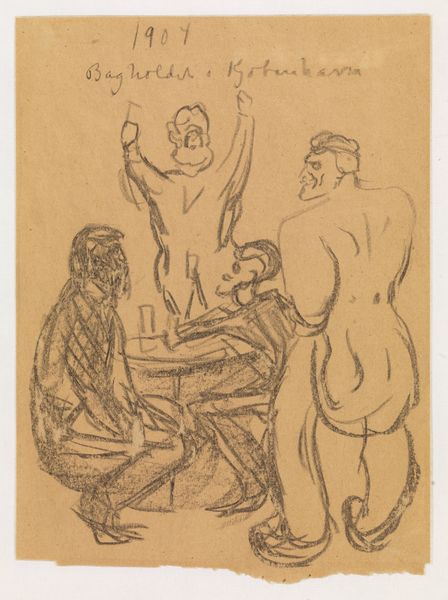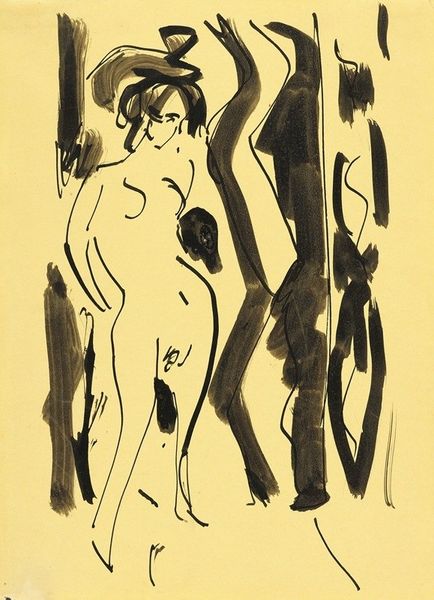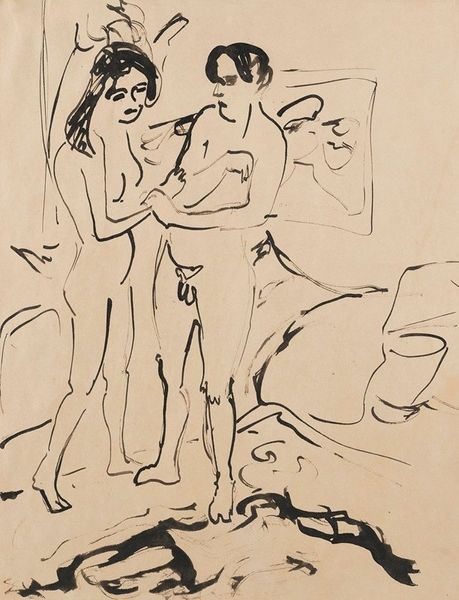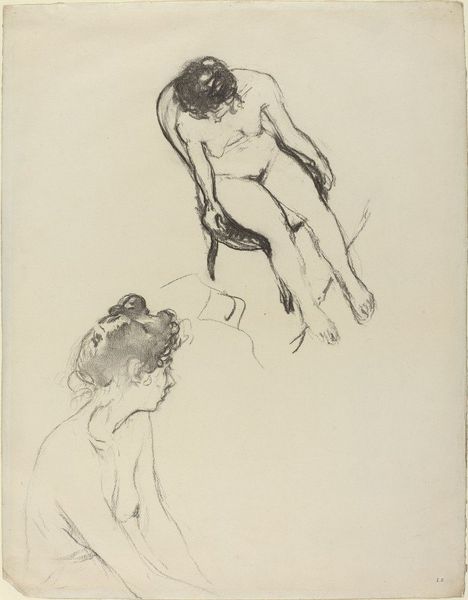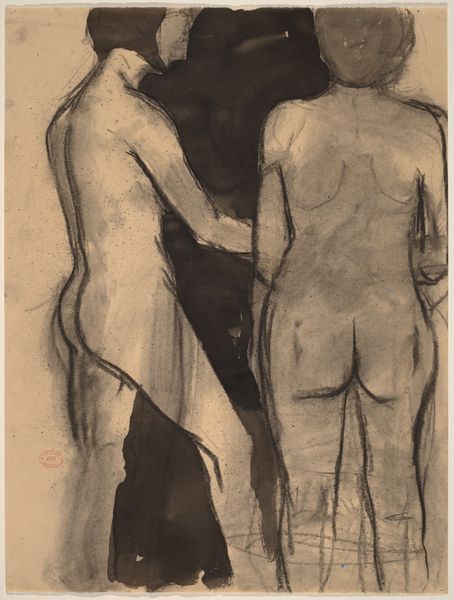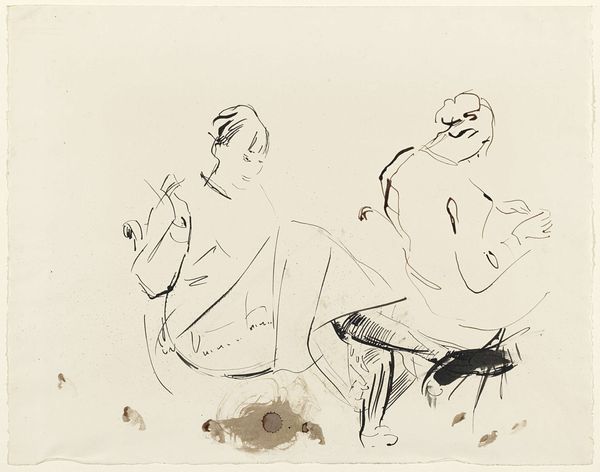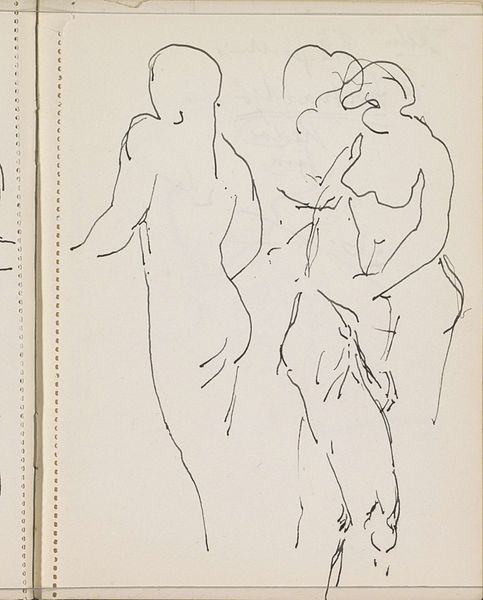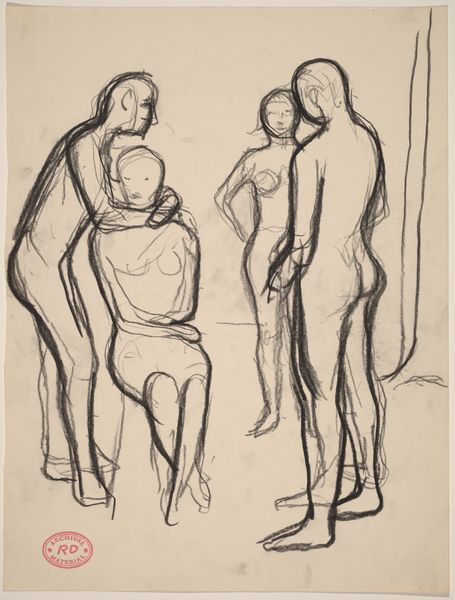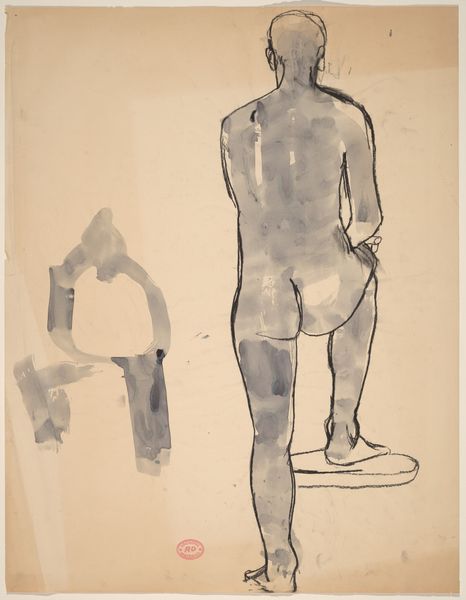
drawing, ink
#
drawing
#
ink drawing
#
figuration
#
ink
#
nude
Copyright: Public Domain: Artvee
Curator: This is "Study with Three Nudes," a work rendered in ink drawing attributed to Rik Wouters. Editor: There’s a striking immediacy about it. The figures seem caught in fleeting, almost accidental poses. I particularly appreciate the strong black lines against the bare paper; it feels very direct, very raw. Curator: Wouters, known for his Fauvist paintings and sculptures, also worked prolifically with drawings, such as this. Though undated, the quick, assured strokes suggest this was a study. We can appreciate its value in exploring how nudes as subject matter reflected evolving societal attitudes, shifting away from academic idealization to something more expressive and personal. Editor: I see the economy of line contributing significantly to its expressiveness. It's not about perfect anatomical accuracy, but capturing the essence of the forms. Notice how a few strokes define the curve of a back or the drape of cloth – very effective. Curator: Absolutely. The composition subtly disrupts conventional depictions of the nude within the artistic establishment. Wouters moved freely between different artist circles in Belgium, like "De Distel," which aimed to promote art appreciation across social classes. It's worth thinking about how this and similar works may reflect his socio-political convictions regarding art’s public accessibility. Editor: The contrast-heavy monochrome lends itself beautifully to graphic simplicity but equally makes a clear study of line and light which has more visual impact than mere sketching. Do you see his involvement with “De Distel” making work that feels more relatable? Curator: In some ways yes, its sketch-like qualities and visible creation process might reflect a deliberate attempt to demystify the art making process itself to the masses. Editor: It invites us to look closely at form and function which seems to create a dialogue between process and political agenda. Fascinating! Curator: Precisely, offering us today a unique window into both the formal and social contexts shaping early 20th-century art. Editor: Agreed. It really showcases the power of minimal means. I find its immediacy incredibly appealing, prompting thoughts of not just form but also on what informs our contemporary tastes today.
Comments
No comments
Be the first to comment and join the conversation on the ultimate creative platform.
